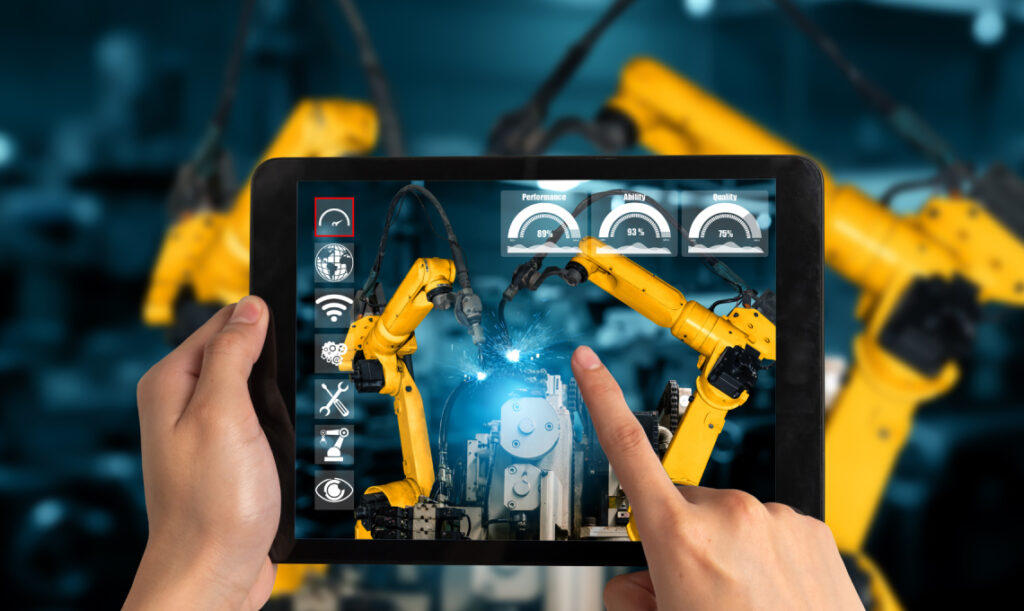
In the realm of motion control and automation, continuing advancements in technology hold the key to unlocking new possibilities in process efficiency, precision, and safety. One such advancement is the advent of collaborative robots or cobots. Designed to interact seamlessly with their human counterparts, these machines are quickly emerging as a transformative force in industries ranging from manufacturing to healthcare, proving that the future of automation is not only high-tech but also highly collaborative.
Unlike traditional industrial robots, collaborative robots are designed to work alongside humans safely, sharing the same workspace and performing highly intricate tasks at a level of precision once considered unattainable. With the growing demand for flexible and adaptable automation solutions, cobots have stepped into the spotlight, addressing the needs of various sectors by offering cost-effective, user-friendly, and versatile automation options.
In this comprehensive article, we will explore the growing trend of collaborative robots in motion control and automation. We will examine the fundamental principles behind cobots, the key differences between cobots and traditional industrial robots, and the diverse range of applications benefiting from this ground-breaking technology. Additionally, we will discuss how Motion Solutions Australia Pty Ltd, with its 30 years of experience in the motion control and automation industry, can assist you in harnessing the power of collaborative robot technology and integrating it seamlessly into your existing systems.
Exploring the Emerging Trend of Collaborative Robots in Motion Control and Automation
Fundamental Principles of Collaborative Robots
Before diving into the applications and benefits offered by collaborative robots, it is essential to understand the fundamental principles behind cobot technology:
1. Human-Robot Interaction: Central to the concept of cobots is the ability to work alongside humans in a shared workspace without requiring physical barriers or extensive safety measures. This is achieved through advanced sensor technology and inherently safe design principles, enabling a symbiotic relationship between robots and workers.
2. Ease of Use: Collaborative robots, unlike their traditional counterparts, prioritise ease of programming and operation. This means that even non-experts can quickly learn to use cobots, streamlining integration into existing workflows.
3. Flexibility and Adaptability: Cobots are designed to be easily reprogrammed and repurposed to accommodate changing needs, allowing for streamlined adaptation to a diverse range of tasks and applications.
Collaborative Robots vs. Traditional Industrial Robots
When considering the implementation of robot technology into your motion control and automation processes, it is crucial to understand the key differences between collaborative robots and traditional industrial robots:
1. Safety and Workspace: The most significant distinction between cobots and traditional industrial robots lies in their approach to safety and workspace interaction. Cobots are designed to safely work in close proximity to humans, while industrial robots generally require fenced-off work areas due to their sheer power and speed, potentially posing risks to human workers.
2. Ease of Programming: Traditional industrial robots often necessitate significant programming expertise, while cobots are designed for quick, user-friendly programming. This means that business owners and staff can quickly adapt cobots to their specific requirements.
3. Flexibility: Industrial robots are typically geared toward high-speed, high-volume applications, making them less adaptable to smaller-scale, varied tasks. Collaborative robots, on the other hand, offer flexibility to meet diverse and dynamically changing needs, making them ideal for small- to medium-sized businesses.
Diverse Applications of Collaborative Robots
The versatile nature of cobots has opened up a wide array of applications across various industries:
1. Manufacturing: Cobots are a natural fit for manufacturing environments, providing efficient support for tasks such as assembly, packaging, and machine loading. Their ability to work alongside human operators allows for increased productivity without sacrificing safety.
2. Healthcare: Collaborative robots have made significant inroads into the healthcare arena, aiding with tasks like medication dispensing, patient rehabilitation, and even surgical assistance.
3. Food and Beverage: The food and beverage industry can benefit from cobots’ flexibility, as they can handle tasks such as sorting, packaging, and even cooking, all while adhering to strict hygiene standards.
4. Logistics: Cobots have also found a place in logistics, streamlining tasks like order fulfilment, stocktaking, and item packaging in warehouses and distribution centres.
Partnering with Motion Solutions Australia Pty Ltd for Cobot Integration
To successfully implement collaborative robot technology into your motion control and automation processes, partnering with a trusted industry leader like Motion Solutions Australia Pty Ltd is essential. The Motion Solutions Australia Pty Ltd team brings numerous advantages to the table:
1. Expertise and Experience: Motion Solutions Australia Pty Ltd’s 30 years of experience in the industry ensure that their team is equipped with the knowledge and expertise required to help you select the right cobot to meet your unique needs.
2. Customised Solutions: Motion Solutions Australia Pty Ltd understands that a one-size-fits-all approach doesn’t always work. Their team is committed to developing tailored solutions that accommodate your specific requirements and constraints.
3. Seamless Integration: Proper integration of cobot systems into existing processes is paramount. Motion Solutions Australia Pty Ltd can support you in seamlessly integrating cobot technology into your motion control and automation solutions, ensuring optimal results.
4. Training and Support: In addition to providing top-notch collaborative robot solutions, Motion Solutions Australia Pty Ltd is dedicated to offering ongoing training and support, empowering your team to maintain and optimise your cobot systems over time.
Conclusion
The advent of collaborative robots marks an exciting paradigm shift in motion control and automation, placing an emphasis on safety, ease of use, and flexibility. By exploring the potential of cobots and partnering with an experienced industry leader like Motion Solutions Australia Pty Ltd, you can embrace this transformative technology and revolutionise your motion control and automation applications.
With Motion Solutions Australia Pty Ltd by your side, you can navigate the rapidly evolving world of collaborative robots in Australia with confidence, tapping into the expertise and support required to seamlessly implement cobot technology into your workflows and unlock new levels of efficiency, precision, and safety. Contact us today to get started.

